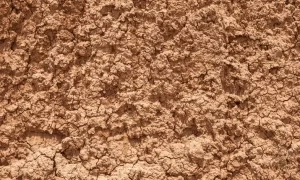How to Plow a Garden? First Step to Prepare a Garden: The first thing to do to start making a garden is to take care of the soil. Preparing it so that it is favorable to the plants we are going to plant. This is an essential work, which affects the final result of the cultivation to a great extent. A well-worked soil with the right fertilization is soft, fertile, and easily penetrable for the roots of plants. Also, able to retain moisture without harmful stagnation. This means preventing many problems and favoring the development of horticultural crops.
The work to be done to prepare a good garden begins with cleaning the soil. It continues with digging, fertilizing, milling or hoeing, and seedbed preparation. Let’s see in detail how to plow a garden & how to prepare the garden soil.
Contents
- The Best Time to Start
- How to Plow a Garden? Explained with Tips & Tricks
- Clean-Up: Remove Weeds and Stones
- Plowing Garden and Prepare the Ground
- What soil should be plowed?
- Sandy soils
- Clay and loam soils
- Advantages of plowing:
- How to Plow Properly?
- Tools to Plow a Garden
- Garden Tiller: Everything You Should Know About This Garden Helper
- Final Thoughts: How to Plow a Garden?
- How deep should you plow a garden?
- When should I plow the garden?
- Should I plow every year?
- Is Plowing good for the garden?
The Best Time to Start
You can start gardening practically at any time of the year. There is always some work to be done and some plants that can be sown or transplanted. However, the best time to start plowing the garden is spring, particularly the month of March for sowing, April, and May for transplanting already formed plants. By starting in spring, it will be possible to take advantage of the summertime heat to rip vegetables to fruit, obtaining abundant harvests. It is the most suitable growing cycle for most vegetables & plants.
To sow in spring, however, it is necessary to start working earlier. The best thing to do is to till the soil between autumn and winter. In this way, the soil will be stirred up, oxygenated, and enriched with organic fertilizing substances. It will start to get active and will have time to structure itself better. The microorganisms present will process the fertilizers, “digesting” them and making them available to the plants. The autumn rains and the winter frosts will improve the soil’s physical structure. The result will be a soft and fertile substrate, ready to welcome horticultural plants.
Tips: In the case of sandy soil, this destroys the upper humus layer and brings less nutrient-rich soil to the surface.
How to Plow a Garden? Explained with Tips & Tricks
Clean-Up: Remove Weeds and Stones
When you start cultivating a plot of land for the first time, you will find that the starting point is a turf made up of various wild grasses, possibly even shrubs. All these grasses should be removed to make room for cultivation. If we want to prevent them from growing back, we must try to remove all the roots and parts of the plant that might contain seeds.
Plowing Garden and Prepare the Ground
The advantages and disadvantages of plowing are controversial. In many cases, this form of soil preparation is useful for providing plants with the best possible foundation for healthy growth. However, not every subsoil should be dug up.
What soil should be plowed?
Before you know how to plow a garden, you need to know what soil should be plowed. Plowing involves turning over and mixing the usable soil horizon in the garden. This action is just as useful on a bed already in use as it is on a lawn. In both cases, live plants and dead debris are incorporated into the soil so that microorganisms decompose the material. However, not every type of soil is suitable for digging.
Sandy soils
You should not plow sandy subsoils. The top horizon consists of nutrient-rich humus. During digging, this layer is destroyed and incorporated into the soil. Nutrient-poor substrate comes to the surface, which is not suitable for planting.
Clay and loam soils
If the substrate consists of clay or loam, it is ideal for preparing a seedbed. Regardless of whether you want to cultivate ornamental or useful plants, plowing is the first step.
Advantages of plowing:
- Aeration of the top layer of soil
- Containment of weeds and grasses
- Displacement of animal pests such as field mice
How to Plow Properly?
When you are here to how to plow a garden, we will provide you with the best way. You can loosen the area between spring and late summer if you’re planning a new lawn. The soil has warm temperatures, and humidity is not too high during this time. If the lawn is to be prepared for growing fruits and vegetables with a tiller, the time for digging depends on the recommended planting and seeding times.
Tools to Plow a Garden
You should use the right tools to plow a garden. If you want to dig up smaller areas in the garden, the choice falls on spades or plows as tools. Technical support will make your work easier and prevent back pain. Garden tillers, powered by electricity or gasoline, are the better choice for large kitchen gardens. Such equipment is pushed over the area like a lawnmower so that the soil is chopped and dug over.
Tips: You can easily collect weeds and stones from the loose soil after the work is done.
Garden Tiller: Everything You Should Know About This Garden Helper
You might get interested in how to plow a garden with a tiller. A garden tiller makes your strenuous gardening work easier. It can hoe, dig and plow through the soil, making it a useful helper. The garden tiller comes in three basic types: An electric hoe, a motor hoe powered by gasoline, and a manually operated tiller. Those devices powered electrically or with gasoline simply push like a lawnmower over the area to be worked. A manual garden tiller is like a hoe, using muscle power and star-shaped tines to work the soil.
The possible uses of the garden tiller at a glance:
- Aeration, vitalization, and cultivation of the soil
- Grinding lawns, trimming lawn edges, and cleaning joints (with the help of special attachments)
- Weeding
Final Thoughts: How to Plow a Garden?
Since you are here to know how to plow a garden, other schools of thought can represent a valid alternative to be discovered. It is possible to cultivate without working the soil and without removing weeds; there is a theory called “agriculture of not doing,” those who are curious can follow the realization of a natural vegetable garden prepared in this way. Even the synergistic garden with raised benches is an excellent alternative to classic spading.
Frequently Answered Questions
How deep should you plow a garden?
The standard practice is cultivating the soil 8-10 inches deep, perhaps even. You can also plow 4-8 inches deeper if the soil is very poor or you are creating a new garden bed.
Learn more about Best Weeding Tools for gardening
When should I plow the garden?
According to experts, the best time to plow garden soil is 2-3 weeks before you plant the plants. However, it is okay to plow anytime between old harvesting produce and planting new ones.
Choose Best Gardening Hats to Tackle Harmful Sun Rays
Should I plow every year?
Yes. It is even better to plow once or twice a year to refresh the planting field and make it more fertile.
Is Plowing good for the garden?
Plowing breaks down the soils and makes them easier to plant. It also helps with drainage and root growth. Regular plowing turns organic matter into the soil and enhances soil quality in your garden. So, yes. Plowing is good for the garden. But too much plowing or doing it wrong might be counter-productive.




